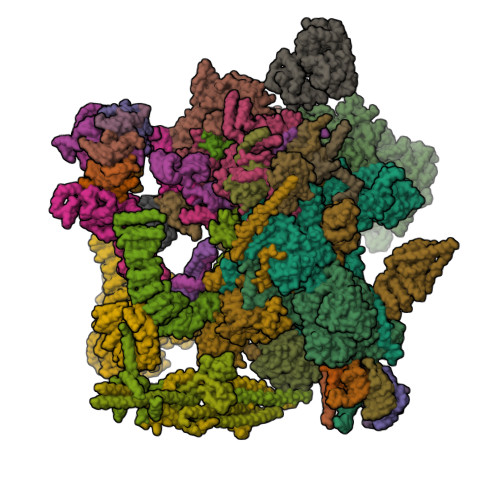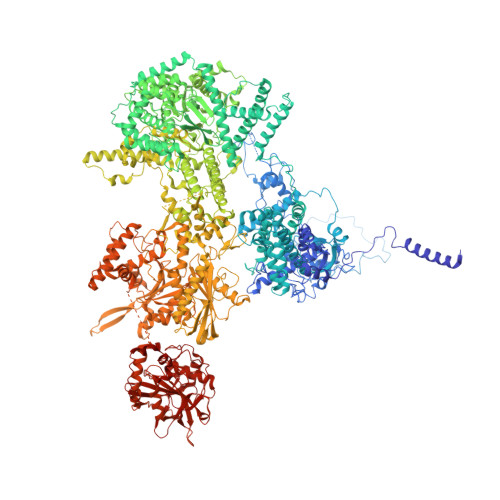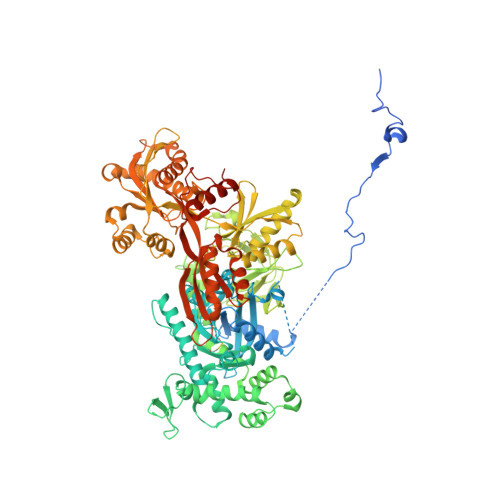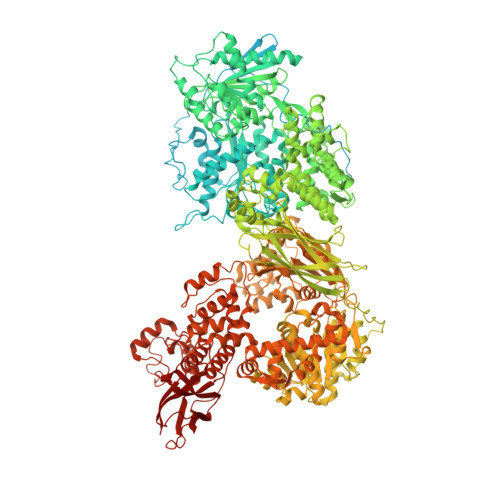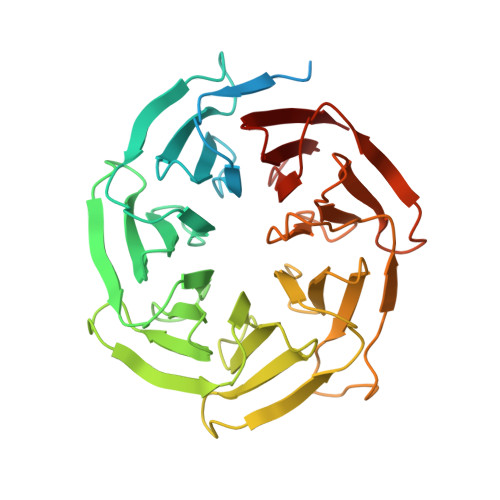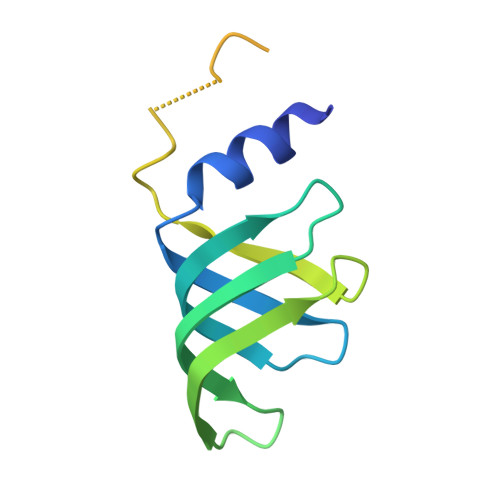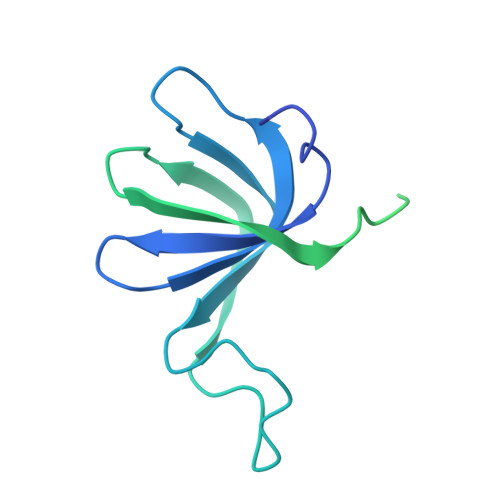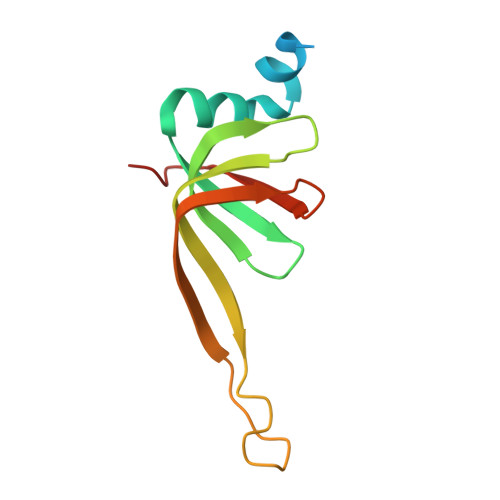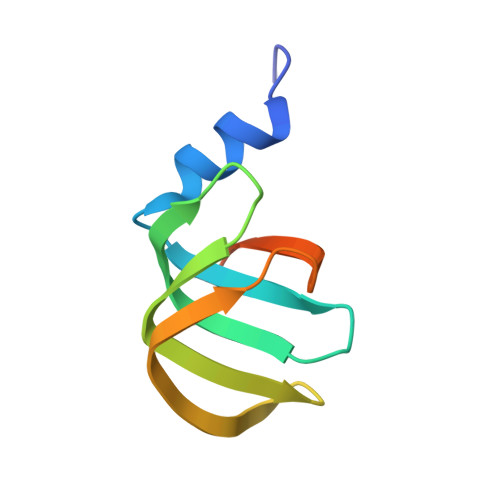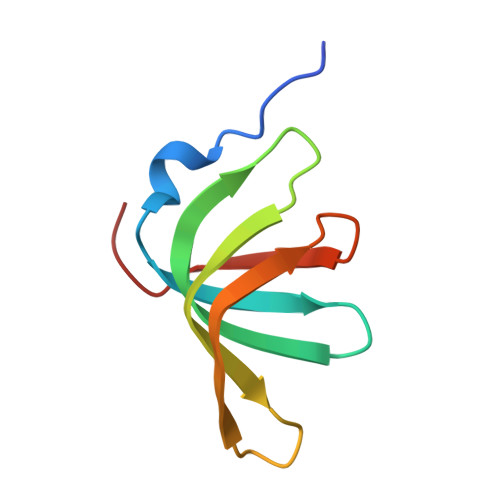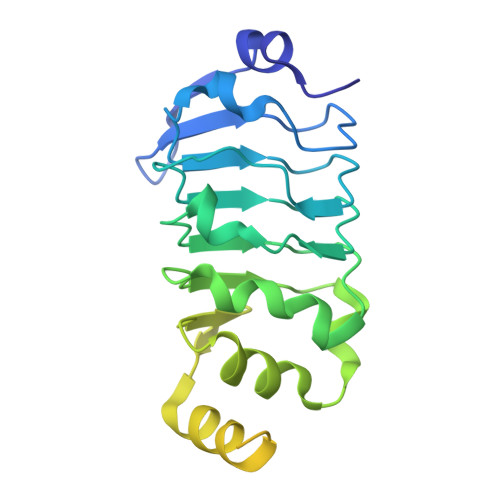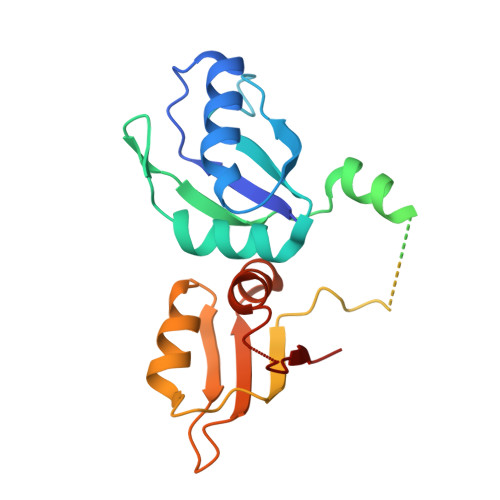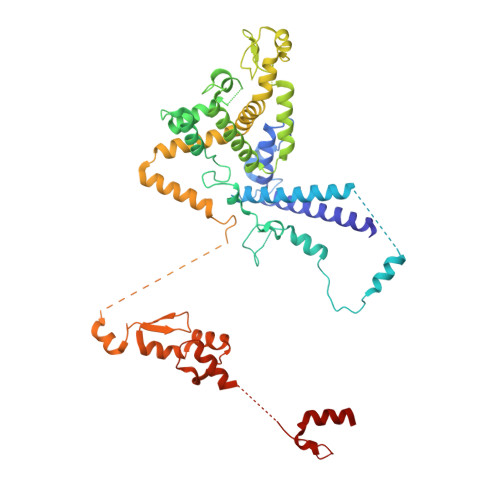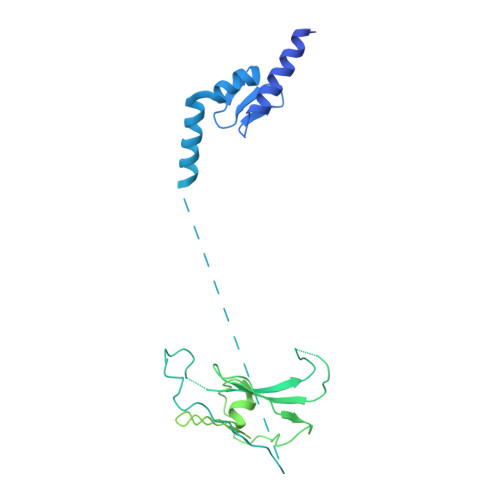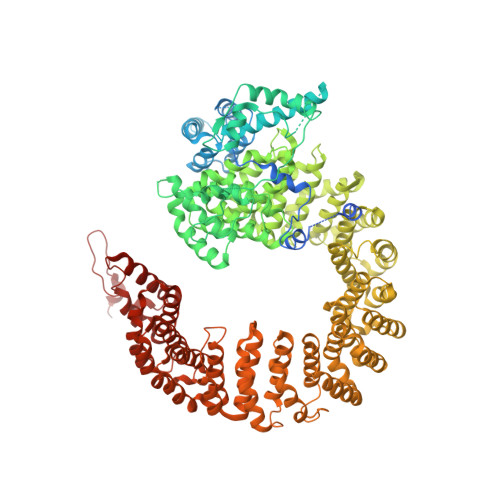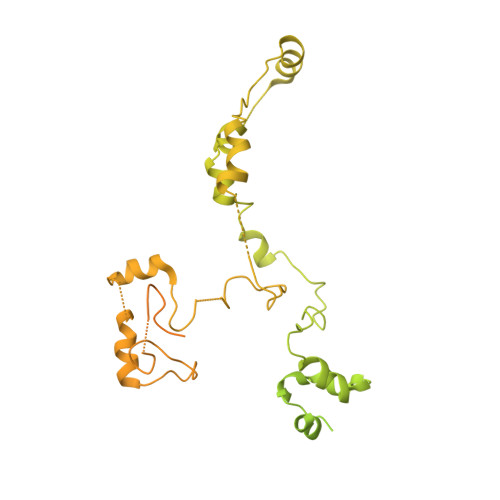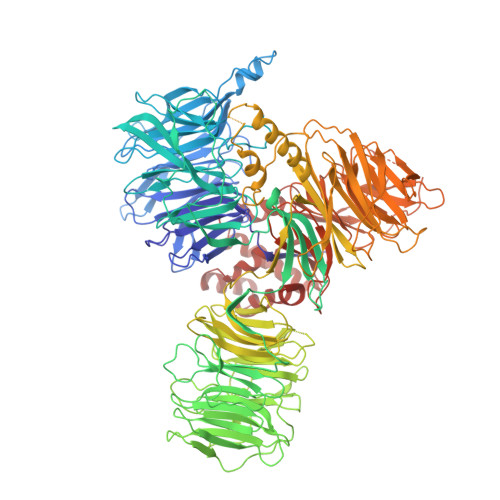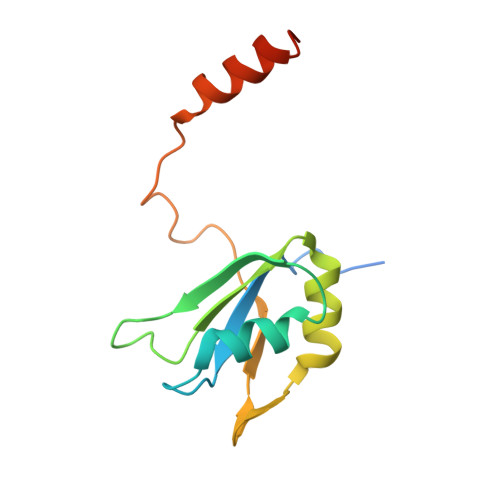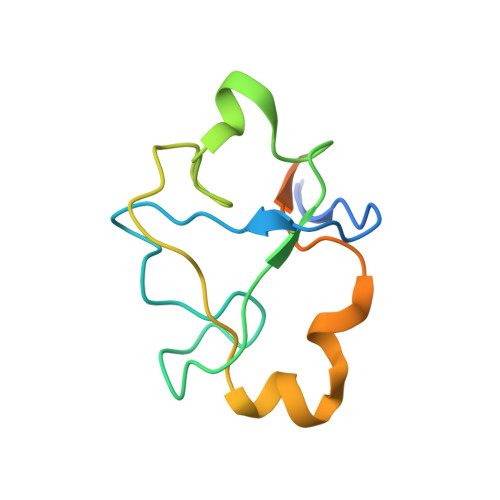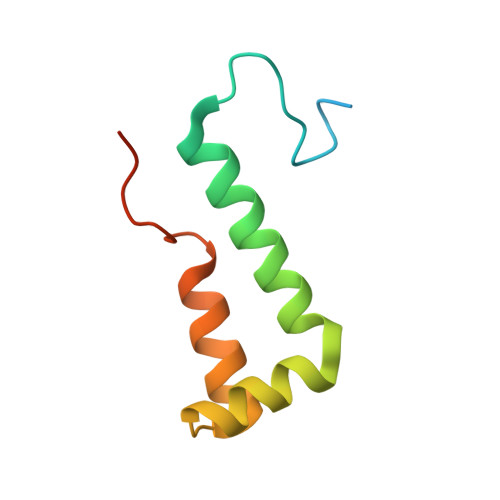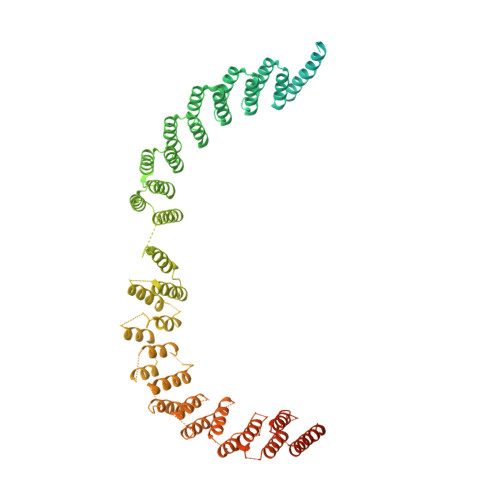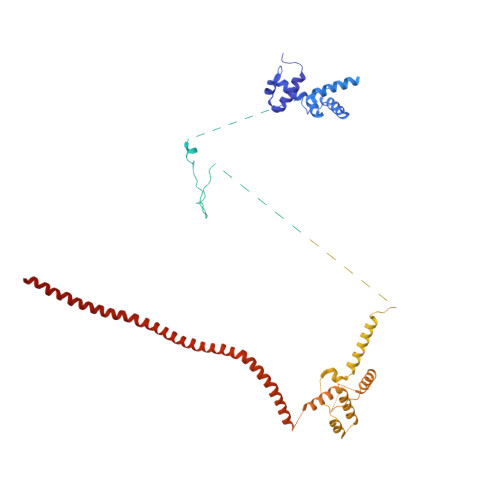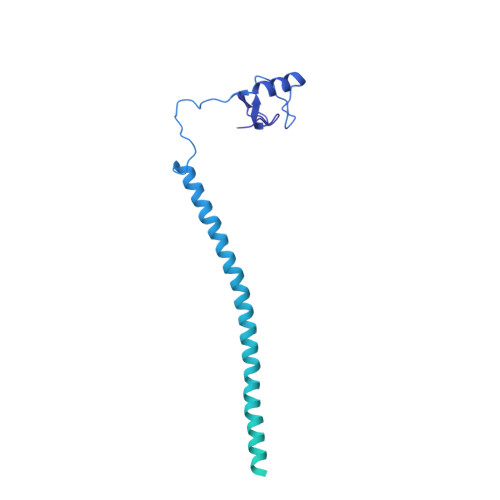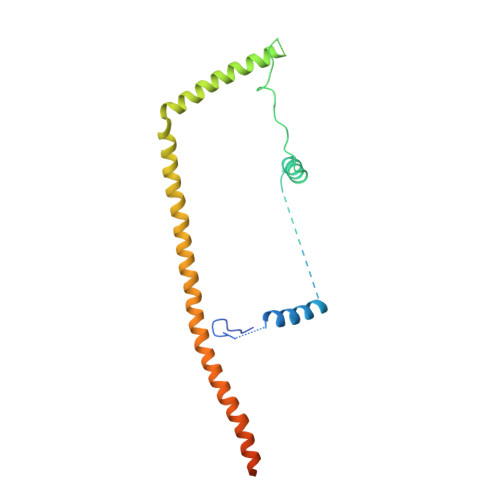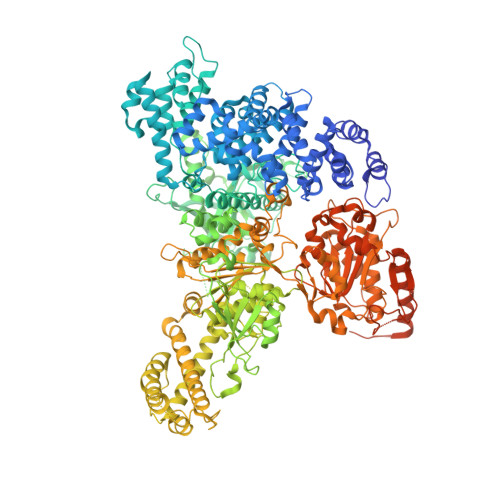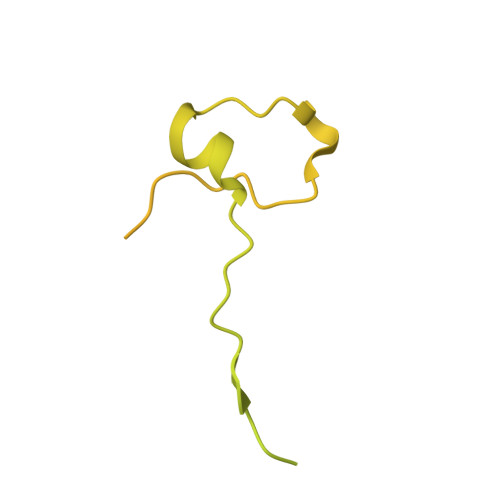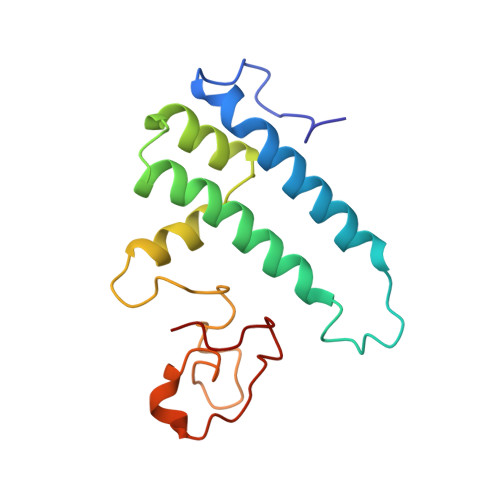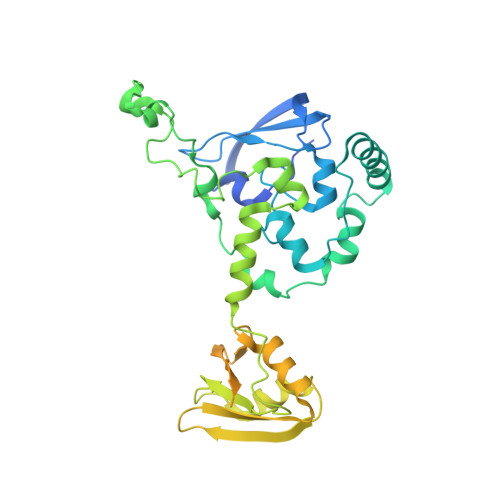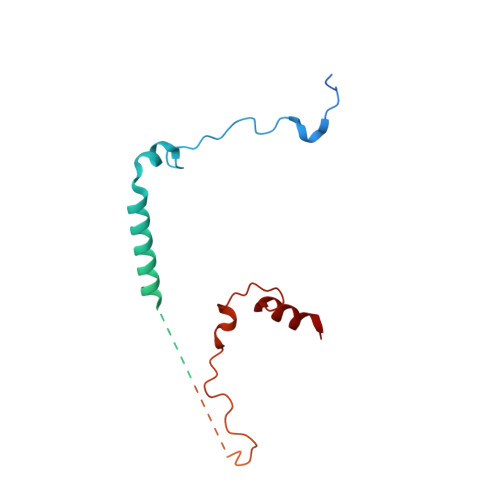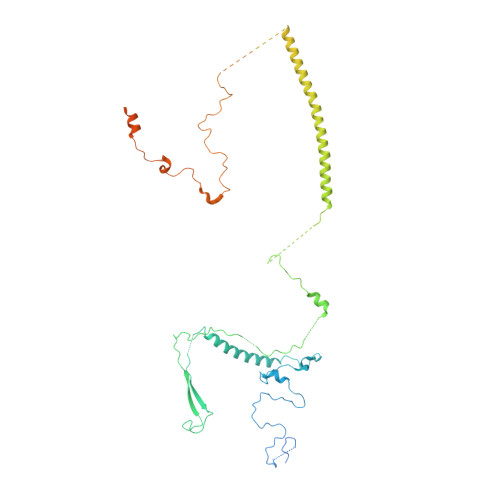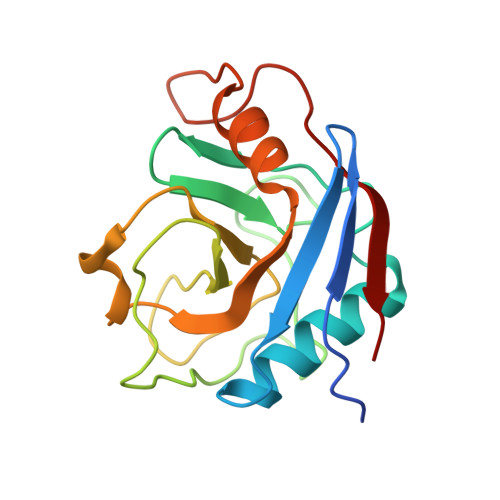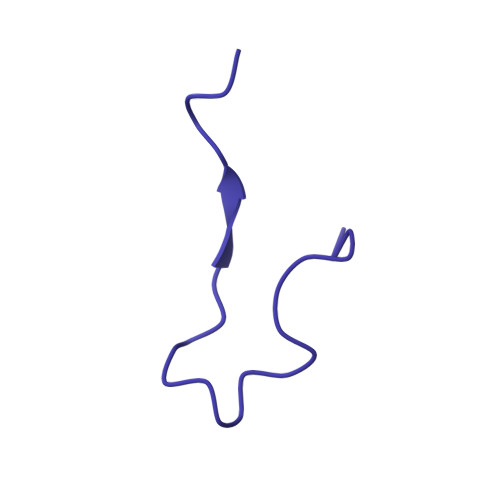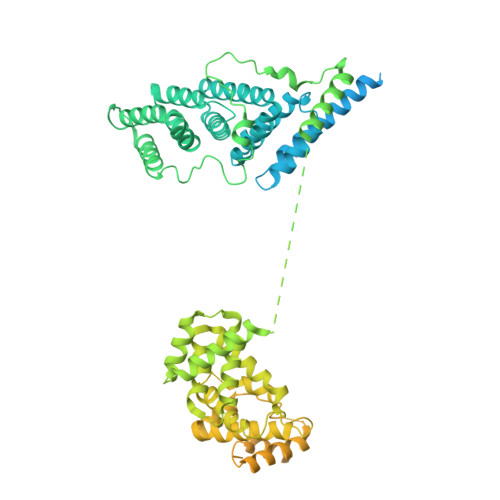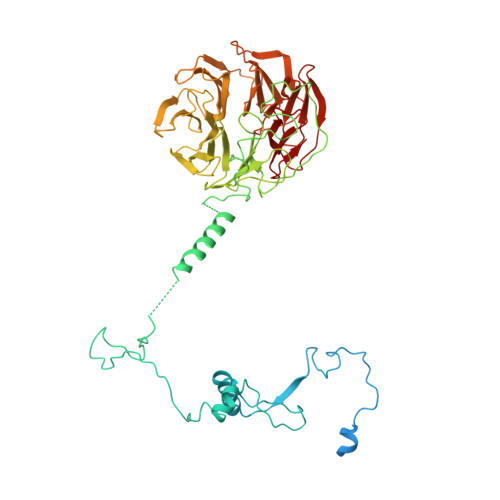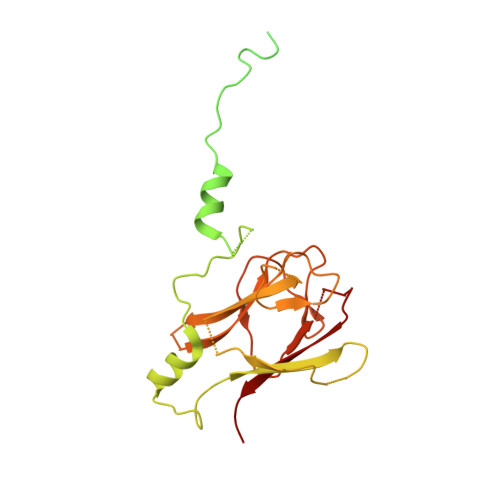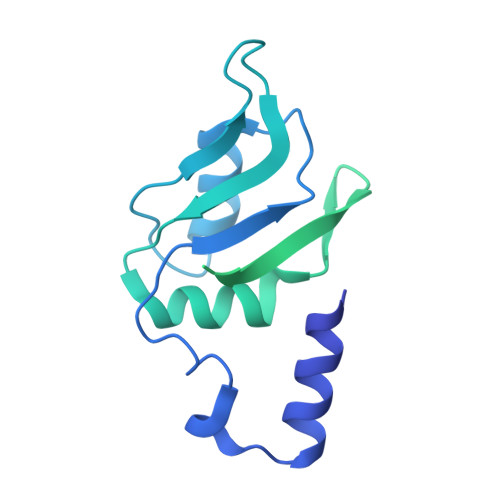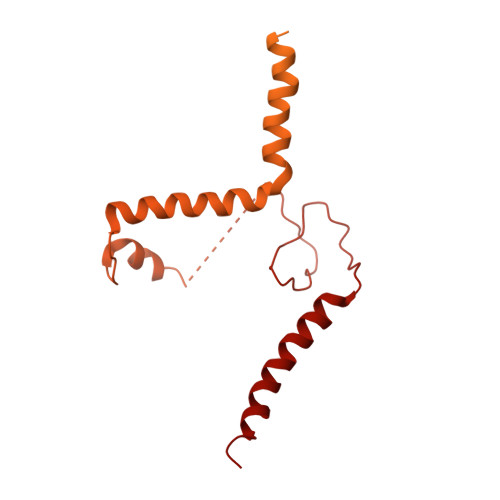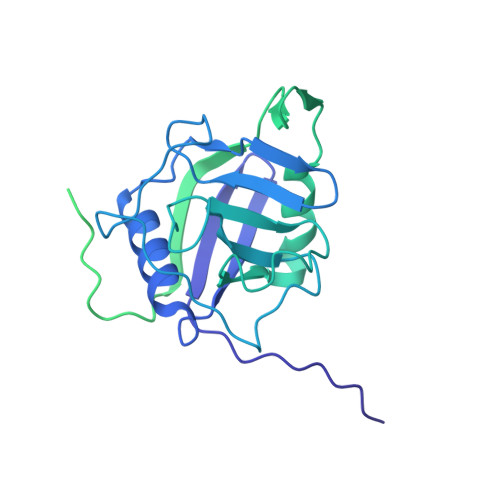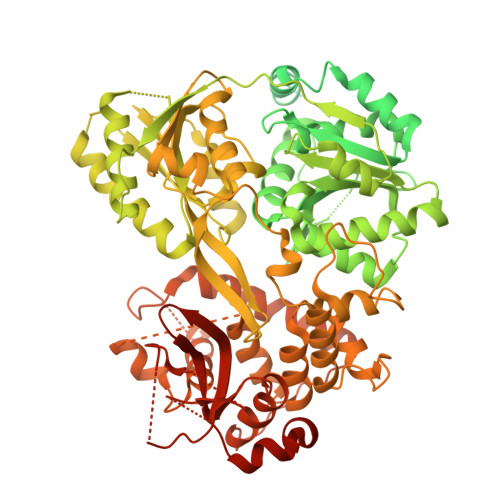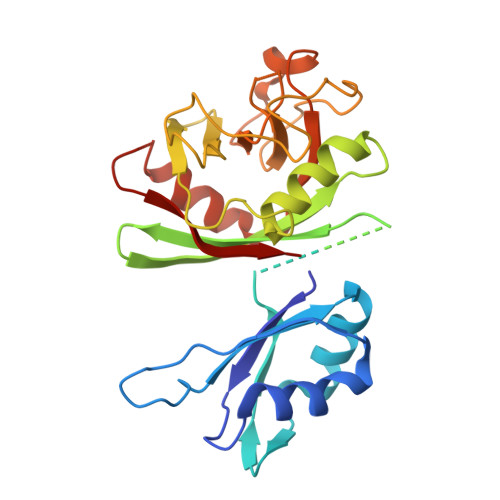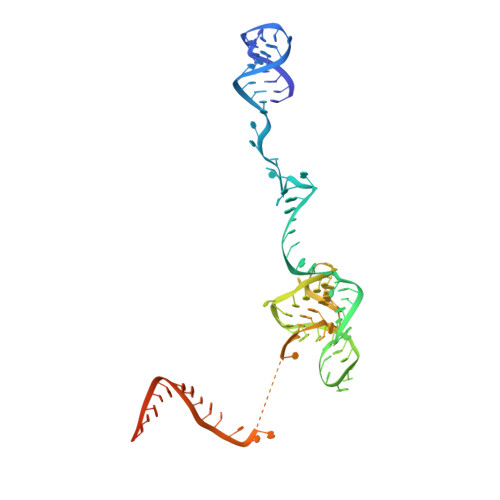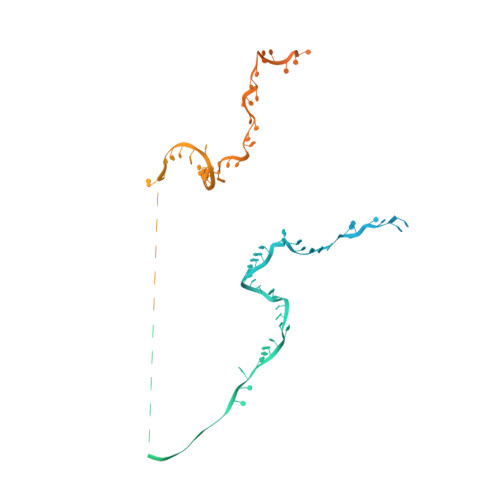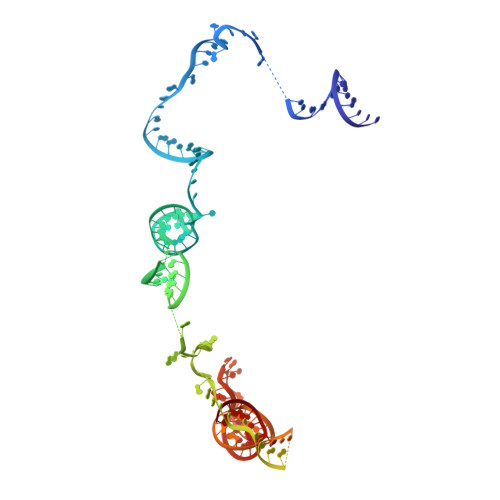Structure of the human activated spliceosome in three conformational states.
Zhang, X., Yan, C., Zhan, X., Li, L., Lei, J., Shi, Y.(2018) Cell Res 28: 307-322
- PubMed: 29360106
- DOI: https://doi.org/10.1038/cr.2018.14
- Primary Citation of Related Structures:
5Z56, 5Z57, 5Z58 - PubMed Abstract:
During each cycle of pre-mRNA splicing, the pre-catalytic spliceosome (B complex) is converted into the activated spliceosome (B act complex), which has a well-formed active site but cannot proceed to the branching reaction. Here, we present the cryo-EM structure of the human B act complex in three distinct conformational states. The EM map allows atomic modeling of nearly all protein components of the U2 small nuclear ribonucleoprotein (snRNP), including three of the SF3a complex and seven of the SF3b complex. The structure of the human B act complex contains 52 proteins, U2, U5, and U6 small nuclear RNA (snRNA), and a pre-mRNA. Three distinct conformations have been captured, representing the early, mature, and late states of the human B act complex. These complexes differ in the orientation of the Switch loop of Prp8, the splicing factors RNF113A and NY-CO-10, and most components of the NineTeen complex (NTC) and the NTC-related complex. Analysis of these three complexes and comparison with the B and C complexes reveal an ordered flux of components in the B-to-B act and the B act -to-B * transitions, which ultimately prime the active site for the branching reaction.
Organizational Affiliation:
Beijing Advanced Innovation Center for Structural Biology, Tsinghua-Peking Joint Center for Life Sciences, School of Life Sciences and School of Medicine, Tsinghua University, Beijing 100084, China.









